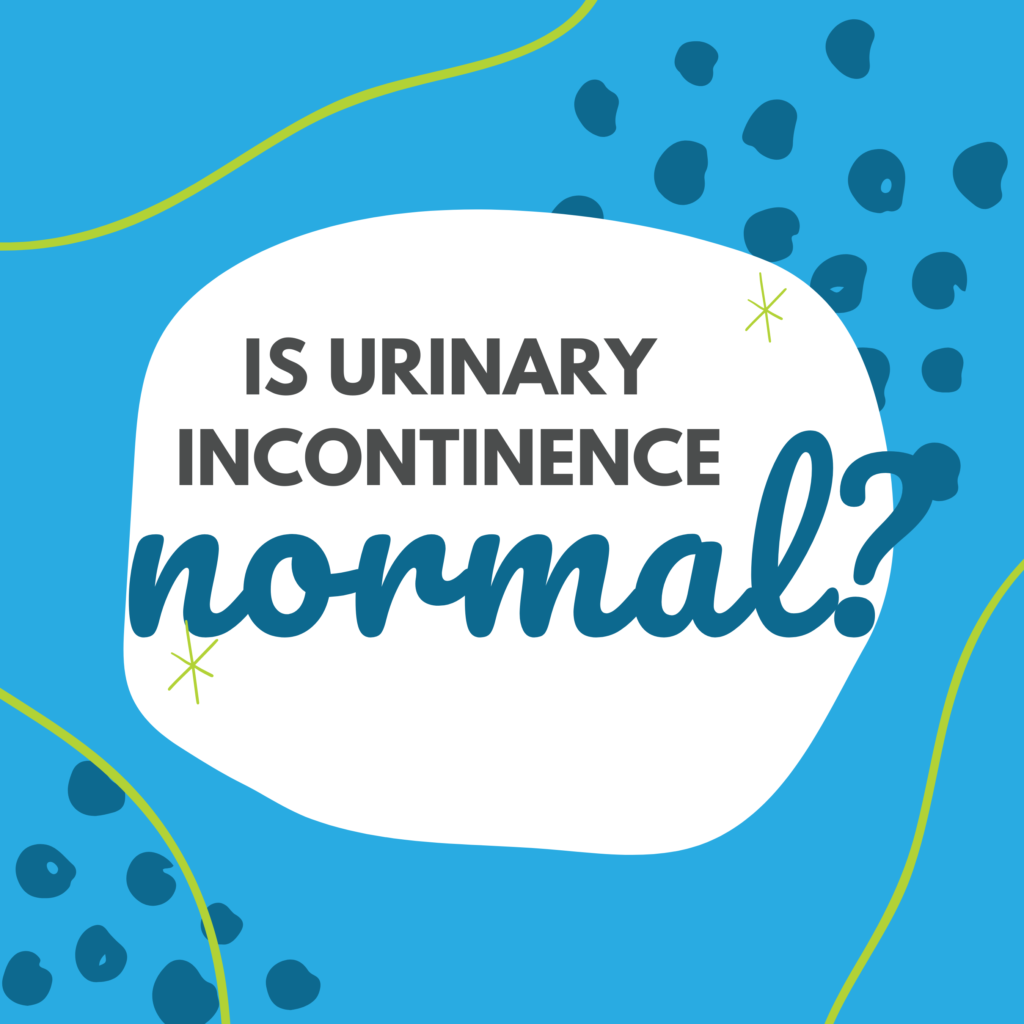Urinary Incontinence

Urinary incontinence (UI) is the involuntary loss (leakage) of urine. Today, there is a widespread misperception that urinary incontinence is a normal part of aging or a natural consequence of childbirth. This is FALSE! Urinary incontinence is COMMON but it is NOT NORMAL. Urinary incontinence can be present in women and men. However, it is more common in women. In the United States, 30% of women will experience urinary incontinence. It is estimated that the number of women in the United States with urinary incontinence will rise from 18.3 million in 2010 to 28.4 million in 2050. Women may experience incontinence due to a dysfunction of the bladder or pelvic floor musculature often arising during pregnancy, childbirth, or at the time of menopause. Men may experience incontinence due to prostatic enlargement or from damage to continence mechanisms during surgery or radiation for prostate cancer.
There are three main types of urinary incontinence: stress urinary incontinence (SUI), urge urinary incontinence (UUI), and mixed urinary incontinence (MUI). Stress urinary incontinence is urine leakage in association with coughing, sneezing, or physical exertion. The prevalence of SUI peaks in the fifth decade of life. An increase in abdominal pressure due to physical exertion puts stress on the bladder, causing urine to leak. The basic mechanisms responsible for that reaction are poor urethral support by the pelvic floor muscles and intrinsic sphincter deficiency. Urge urinary incontinence is urine leakage in association with sudden compelling desire to void that is difficult to defer. This type of incontinence is usually caused by involuntary contractions of the detrusor muscles of the bladder wall at inappropriate times. UUI can be triggered by the sound of running water, exposure to cold temperatures, or drinking cold beverages. When both types of UI are present, it is referred to as mixed urinary incontinence.
For good bladder health, urinating or voiding 6-8x during waking hours is considered normal. A person should expel a volume of 250-300 ml of urine per void. The bladder can comfortably hold up to 500ml of urine.
Medications that can cause incontinence:
- -a-Adrenergic agonists
- -a-Adrenergic antagonists
- -Angiotensin-converting enzyme inhibitors
- -Anticholinergics
- -Calcium channel blockers
- -Cholinesterase inhibitors
- -Diuretics
- -Lithium
- -Opioid analgesics
- -Gabapentin
- -SSRIs
- -Psychotropic drugs, sedatives, hypnotics, antipsychotics, and histamine 1 receptor antagonists
UI can also have a psychological impact and substantially reduce a person’s quality of life. People often experience discomfort, low self-esteem, mood deterioration, and the feeling of helplessness. There is a decline in the quality of their personal, social, and professional life. Many are forced to change their lifestyle which ultimately has a negative impact on socializing and can contribute to alienation, social isolation, changes in sexual activity, depression/anxiety, decrease in travel, and decrease in physical activity. Research shows female urinary incontinence and urgency negatively affects sexual function in almost 50% of affected women and in 20% of their partners.
If you have experienced any of these symptoms, please feel free to call us at (318) 396-1969 for a pelvic health evaluation. Pelvic floor rehabilitation is recommended as the first-line conservative treatment for these symptoms. Pelvic floor rehabilitation is more than KEGELS!
Monroe
West Monroe
Ruston
Shreveport
Monday-Friday
8am-5:30pm
Copyright © 2025 Melanie Massey Physical Therapy
